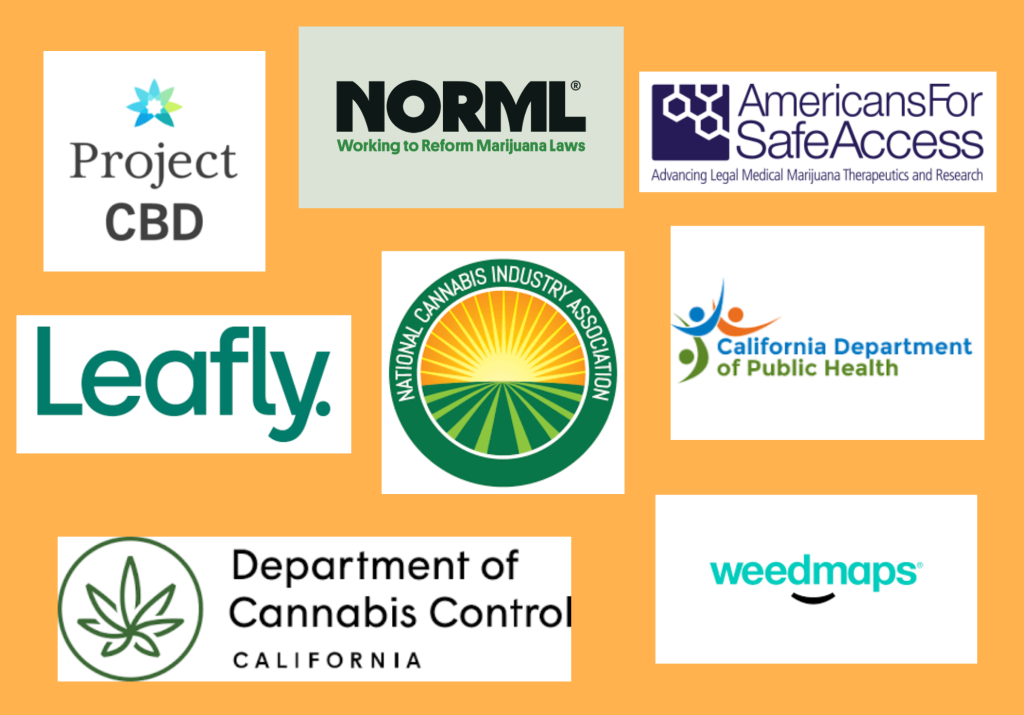
“The Scientist” is a documentary that traces the story of Dr. Raphael Mechoulam from his early days as a child of the Holocaust in Bulgaria, through his immigration to Israel, and his career as the chief investigator into the chemistry and biology of the world’s most understood plant. *Fundación CANNA. It is a must watch!
What is cannabis?
Cannabis refers to a group of three plants known as Cannabis sativa, Cannabis indica, and Cannabis ruderalis. Cannabis is a genus of medicinal, recreational, and fiber plants belonging to the family Cannabaceae.
Historically, what was cannabis used for?

The cannabis or hemp plant originally evolved in Central Asia before people introduced the plant into Africa, Europe, and eventually the Americas. The fiber was used to make clothing, paper, sails, and rope, and its seeds were used as food. It has also been used for religious, social, and medical purposes. The oldest written account of using cannabis was found in China. When the process of extraction was developed, the Chinese realized the psychoactive use of the oil (resin) from the cannabis seed and applied this to their medicinal practices.
Though the plant was not indigenous, African tribes throughout the continent used cannabis for religious, magical, and jurisprudence. They also used cannabis in folk traditional medicinal practice. The plant was used as a remedy for snake bites, to facilitate childbirth, and as a remedy for anthrax, malaria, blackwater fever, blood poisoning, and dysentery. It was also famous for relieving the symptoms of asthma.
In India, According to The Vedas, cannabis was one of five sacred plants and a guardian angel lived in its leaves. The Vedas call cannabis a source of happiness, joy-giver, liberator that was compassionately given to humans to help us attain delight and lose fear. They also felt that it released anxiety.
As the American colonies were founded and grew, cannabis/hemp was an important crop. As in Europe, clothes were often made out of hemp. Ropes made of hemp were needed for America’s commercial and defense ships. It was also used to make oakum – twisted and tarred fibers that were pounded in between the boards of a ship as waterproofing. In the 1830s, Sir William Brooke O’Shaughnessy, an Irish doctor studying in India, found that cannabis extracts could help lessen stomach pain and vomiting in people suffering from cholera. By the late 1800s, cannabis extracts were sold in pharmacies and doctors’ offices throughout Europe and the United States to treat stomach problems and other ailments.
When and why was cannabis made illegal?
Before the 20th century, cannabis was used regularly as medicine but at the beginning of the 1900s, it was suddenly seen as a harmful drug. The ban didn’t begin because of a fear of its effects at all. Read more here: https://www.leafly.com/learn/legalization/marijuana-illegal-history
What is the endocannabinoid system and what are endocannabinoids?
The endocannabinoid system (ECS) is a complex cell-signaling system in our own bodies. The ECS involves three core components: endocannabinoids, receptors, and enzymes. Experts are still trying to fully understand the ECS. But so far, we know it plays a role in regulating a range of functions and processes, including, sleep, mood, appetite, memory, reproduction and fertility. The ECS exists and is active in your body even if you don’t use cannabis. Experts believe that maintaining homeostasis is the primary role of the ECS. Watch this video here:
What are phytocannabinoids?
Phyto cannabinoids are simply compounds naturally found in the cannabis sativa plant. These compounds interact with the cannabinoid receptors found on cells in parts of our own bodies’ natural systems. Receptors, in our body, such as the CB1 and CB2 receptors, are what allow us to feel the effects of cannabinoids — even in the naturally occurring ones of our own ECS. At least 113 different phyto cannabinoids have been isolated from the Cannabis plant. The most studied cannabinoids include tetrahydrocannabinol (THC), cannabidiol (CBD).
What are the main cannabinoids?
We have all heard of CBD and THC, but there is so much more! CBDA, CBG, CBN, THCA, THCV and more! Read here: https://www.discovermagazine.com/lifestyle/what-are-cannabinoids-their-benefits-side-effects-and-more
What are terpenes?
Terpenes are aromatic compounds found in many plants. These aromatic compounds create the characteristic scent of many plants, such as cannabis, pine, and lavender, as well as fresh orange peel. The fragrance of most plants is due to a combination of terpenes. In nature, these terpenes protect the plants from animal grazing or infectious germs. Terpenes play a role in differentiating the effects of various cannabis strains. They also may offer some health benefits to the human body. As regulations surrounding cannabis become less strict, scientists are carrying out more research into these possible benefits. Some examples are pictured here:
What is the difference between Hemp and Cannabis?
Hemp plants and marijuana plants are both the same species. Legally, hemp is defined as a cannabis plant that contains 0.3 percent or less THC, while marijuana is a cannabis plant that contains more than 0.3 percent THC.
CBD for example can be derived from both hemp and cannabis plants. However, in the United States, there are still no clear regulations for managing the quality of hemp-derived cannabidiol (CBD) products, says the Pharmacy Times. Without regulations, CBD companies could be more likely to mislabel or put lower quality products on shelves for consumers. Yet mislabeling alone is not likely to severely impact patient health,
The more serious problem occurs with CBD that is mislabeled and has not been quality controlled. This should be a significant concern for all hemp-based products; hemp is a strong bio-accumulator that can absorb heavy metals and toxins from the soil. “This is great for remediating soil, but it also means that the plant (and therefore your CBD) might easily contain contaminants,”
CBD derived from cannabis IS regulated within California as a cannabis product, and may only be sourced from, produced, and sold by those with commercial cannabis licenses. Testing is done to ensure quality and potency. Products should be contaminant-free and labeled to inform purchasers. You can only purchase cannabis derived CBD products in a licensed cannabis retail dispensary or delivery service.
Which Effects are you Looking For?
In the United States, the science on cannabis, possible effects and implications for certain ailments, is still in its infancy. With more and more states legalizing cannabis and Federal legalization on the horizon, we hope to learn more about the science behind this plant. We do know that each different cultivar (“strain”) doesn’t necessarily supply the same effects for each person. Also, a cultivar planted in one location may have different effects than the same cultivar grown in a different location. However, over the years, we have had a lot of anecdotal evidence that may suggest certain cultivars may provide the desired effects to help with specific issues or ailments.
Cooking with Cannabis


Laurie Wolf is “The Martha Stewart of Marijuana Edibles” –The New Yorker
The benefits of marijuana for treating symptoms of severe illnesses are immeasurable. People with AIDS, cancer, neurological issues, arthritis, anxiety, depression, glaucoma, and many other illnesses are turning to cannabis to avoid the powerful and unpleasant side effects that often come with traditional medications. An easy way to incorporate cannabis into your life is to include it in your everyday diet.
Ingest your marijuana in a wide range of delicious foods with Cooking with Cannabis. Featuring step-by-step photos of how to make the various infusions that are the foundation of cooking with cannabis, these more than 70 simple recipes include a variety of gluten-free and vegan options.
Learn about various strains of marijuana, the different types of cannabinoids and their effects, how to use marijuana as a seasoning, and tips for storing and freezing. This sophisticated guide will teach you the importance of patience in waiting for a marijuana edible to take effect and that less is, in fact, more. https://www.amazon.com/Cooking-Cannabis-Delicious-Everyday-Favorites/dp/1631591169

According to LEAFLY MAGAZINE, making cannabis edibles is easy and fun. If you want to tackle creating your own infused concoctions, this guide is a helpful primer on how to cook edibles at home, how to make staples like infused cannabutter and oils, and easy recipe suggestions you can try. https://www.leafly.com/news/lifestyle/cannabis-baking-essential-recipes


DID YOU SAY SUPPOSITORY? YES WE DID!
Your grandmother and grandfather are probably more familiar with suppositories than you, but they have been around for a long time. However, it was only recently that the product was introduced as a cannabinoid delivery method. Marijuana suppositories were initially created to provide a non-smoking method of THC/CBD delivery for medical patients says Steven Voser on CannaConnection.
He also states that Marijuana suppositories are an excellent solution for everyone who wants the medicinal benefits of cannabis but without the high. Especially elderly patients and those suffering from the vomiting and nausea associated with chemotherapy, which generally can make ingesting pills or smoking/vaping cannabis difficult at best, seem to be more interested in cannabis suppositories.
You can purchase them at any licensed dispensary OR make your own!
Here are 2 great sites for suppository information


For more cannabis education, visit these reputable sites:
Americans for Safe Access – https://www.safeaccessnow.org/
NORML – https://norml.org/
Project CBD – https://projectcbd.org/
Leafly Magazine – https://www.leafly.com/
Weedmaps – https://weedmaps.com/
California Department of Public Health – https://www.cdph.ca.gov/Programs/DO/letstalkcannabis/Pages/Community-Toolkit.aspx
California Dept of Cannabis Control – https://cannabis.ca.gov/

“Develop a passion for learning. If you do, you will never cease to grow.”
Anthony J. D’Angelo

